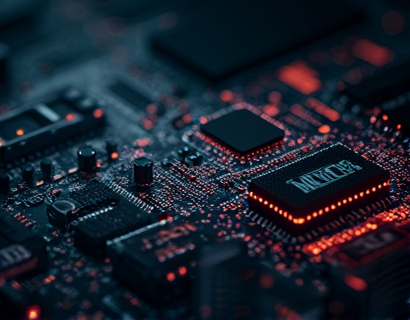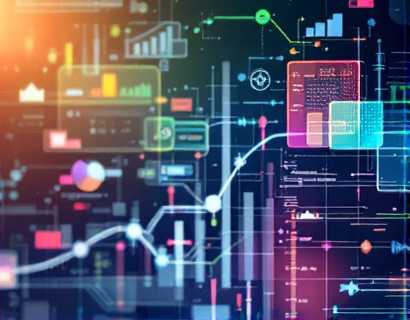Personalized AI-Driven Math Education for Children and Young Learners: Empowering Future STEM Success
The integration of Artificial Intelligence in education, particularly in mathematics, represents a significant leap forward in how we approach learning for children and young learners aged 5 to 18. This innovative approach leverages the power of AI to create personalized learning experiences that adapt to each student's unique needs, abilities, and learning pace. By combining interactive problem-solving, engaging resources, and adaptive learning paths, this AI-driven platform aims to build confidence, enhance academic performance, and foster a lifelong passion for mathematics and STEM fields.
Understanding the Need for Personalized Learning
Traditional classroom settings often struggle to meet the diverse needs of students due to class size and resource limitations. A one-size-fits-all approach can lead to some students falling behind or becoming disengaged. Personalized learning, facilitated by AI, addresses these challenges by tailoring the educational experience to individual learners. This method ensures that each student receives the appropriate level of challenge and support, thereby optimizing their learning journey.
Key Features of AI-Driven Math Education
The AI-driven math education platform offers several key features designed to revolutionize the learning experience:
- Personalized Learning Paths: The AI analyzes each student's strengths, weaknesses, and learning style to create a customized learning plan. This plan evolves as the student progresses, ensuring continuous alignment with their developmental needs.
- Interactive Problem-Solving: Engaging and interactive problems are presented to students based on their current skill level. These problems adapt in difficulty and type to keep students challenged and interested.
- Engaging Resources: The platform incorporates a variety of multimedia resources such as videos, animations, and interactive simulations to make learning more engaging and accessible.
- Real-Time Feedback: Immediate feedback on assignments and quizzes helps students understand their mistakes and learn from them promptly. This instant feedback loop reinforces correct concepts and addresses misunderstandings quickly.
- Progress Tracking: Both students and educators can monitor progress through detailed dashboards. These tools provide insights into areas of improvement and highlight achievements, fostering a sense of accomplishment.
Building Confidence Through Personalized Learning
One of the most significant benefits of AI-driven personalized learning is the enhancement of student confidence. By working at their own pace and receiving tailored support, students are more likely to feel successful and capable. This confidence is crucial, especially in mathematics, where a positive mindset can significantly impact a student's willingness to engage with the subject matter.
Personalized learning ensures that students are neither bored by material that is too easy nor overwhelmed by challenges that are too difficult. This balanced approach helps build a strong foundation in math, reducing anxiety and increasing self-efficacy. As students overcome challenges and achieve milestones, their confidence grows, encouraging them to tackle more complex problems and explore advanced concepts.
Enhancing Academic Performance
The adaptive nature of AI-driven math education directly contributes to improved academic performance. By identifying and addressing knowledge gaps, the platform ensures that students master fundamental concepts before moving on to more advanced topics. This systematic approach prevents the buildup of misconceptions and ensures a solid understanding of the material.
Moreover, the personalized feedback and immediate correction of errors help students develop a deeper understanding of mathematical principles. This deeper understanding translates into better problem-solving skills and higher test scores. Educators can also benefit from the detailed analytics provided by the platform, allowing them to identify trends and intervene proactively to support students who may be struggling.
Fostering a Lifelong Passion for Mathematics and STEM
The goal of AI-driven math education extends beyond academic performance; it aims to cultivate a genuine love for mathematics and STEM fields. By making learning engaging and relevant, the platform inspires students to see the beauty and utility of math in real-world applications. This positive association can motivate students to pursue further studies in STEM, opening doors to a wide range of career opportunities.
Engaging resources and interactive problem-solving activities help students discover the practical applications of mathematics, from engineering and computer science to finance and environmental science. By experiencing the impact of math in various fields, students are more likely to develop a lasting interest and enthusiasm for these subjects.
Implementing AI in Math Education: Challenges and Solutions
While the potential benefits of AI-driven math education are clear, there are challenges to consider. One major challenge is ensuring the accuracy and reliability of the AI algorithms. Educational content must be rigorously vetted to maintain high standards and align with curriculum requirements. Continuous updates and expert oversight are essential to address this challenge.
Another consideration is the digital divide, where not all students have equal access to the necessary technology. To mitigate this, initiatives should focus on providing equitable access to devices and internet connectivity. Collaborations with educational institutions and government programs can help bridge this gap.
Privacy and data security are also paramount. Strict protocols must be in place to protect student data and ensure compliance with regulations such as the Family Educational Rights and Privacy Act (FERPA). Transparency about data usage and parental consent are crucial in building trust.
The Role of Educators in AI-Driven Learning
Despite the advanced capabilities of AI, educators remain a vital component of the educational process. Teachers play a crucial role in guiding students, providing emotional support, and fostering a collaborative learning environment. AI tools should be seen as augmentations to traditional teaching methods, not replacements.
Educators can leverage AI-generated insights to tailor their instruction, identify students who need extra support, and design more effective lesson plans. The data-driven approach allows for more informed decision-making and personalized interactions with students. Professional development programs can help teachers integrate AI tools effectively into their teaching practices.
Future Directions and Innovations
The field of AI-driven math education is rapidly evolving, with ongoing research and development promising even more sophisticated and effective tools. Future innovations may include:
- Integration with Virtual and Augmented Reality: Creating immersive learning experiences that further enhance engagement and understanding.
- Advanced Natural Language Processing: Enabling more intuitive interactions and personalized explanations through conversational interfaces.
- Social Learning Features: Facilitating peer collaboration and competition to motivate students and promote a sense of community.
- Predictive Analytics: Using machine learning to forecast student performance and identify at-risk students before issues arise.
These advancements will continue to refine the personalized learning experience, making it even more effective and accessible for all students.
Conclusion
AI-driven personalized math education represents a transformative approach to learning, offering tailored experiences that empower children and young learners to reach their full potential. By combining interactive problem-solving, engaging resources, and adaptive learning paths, this technology builds confidence, enhances academic performance, and fosters a lifelong passion for mathematics and STEM. As the field continues to evolve, the potential for positive impact on education and society is immense.










































